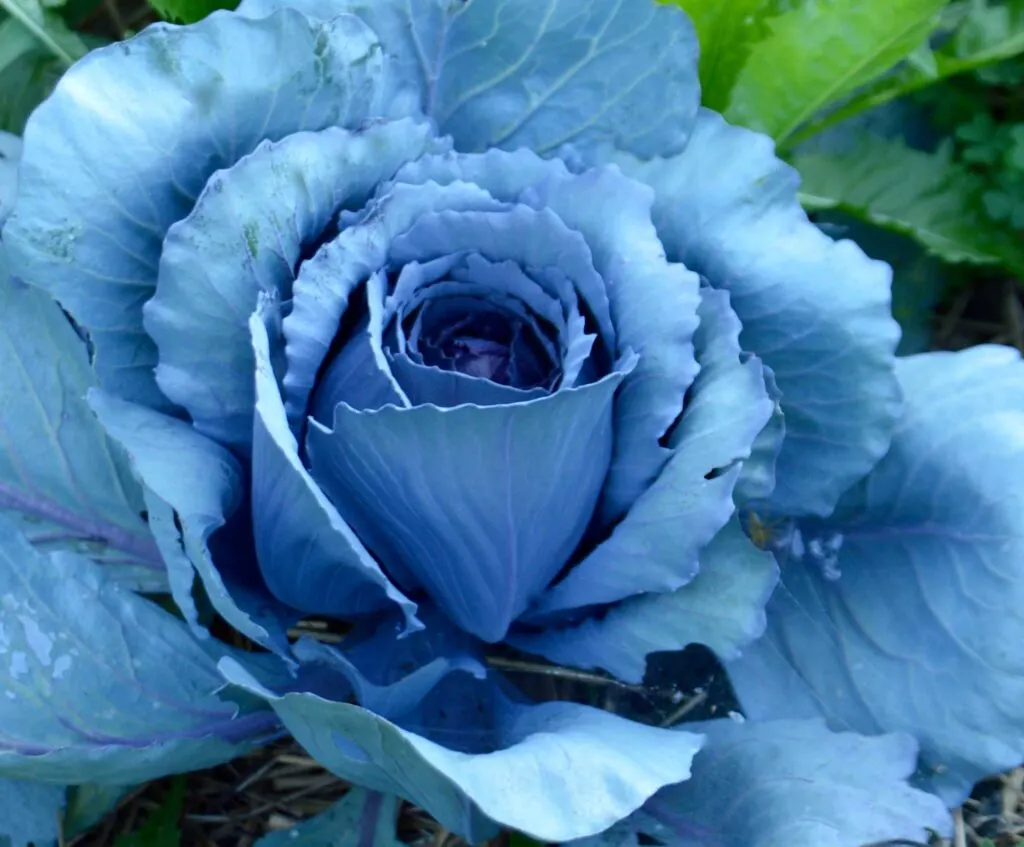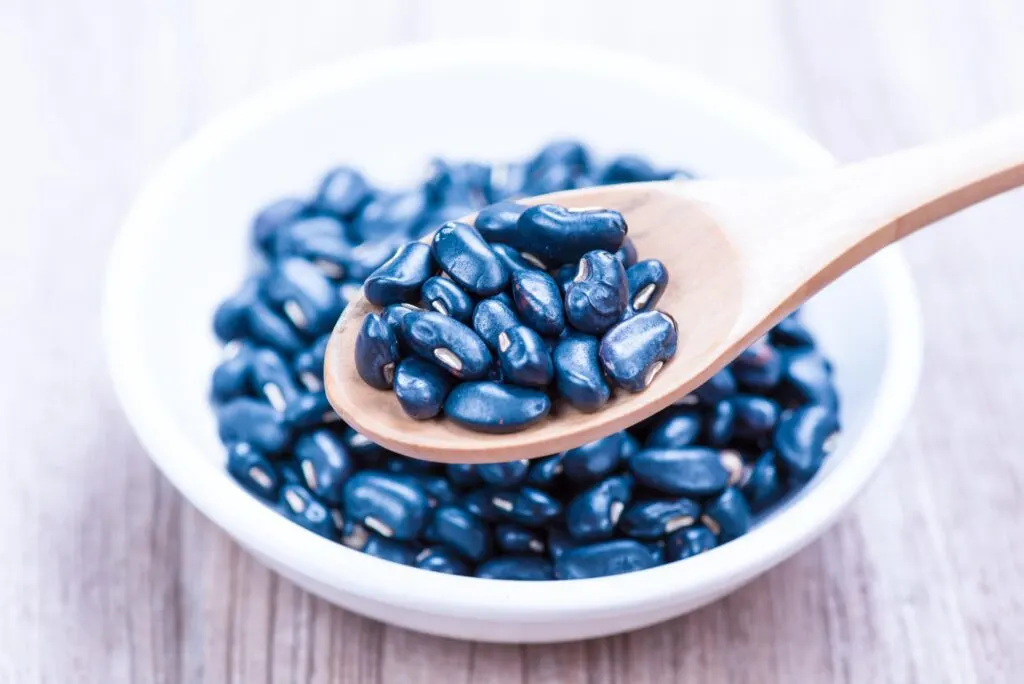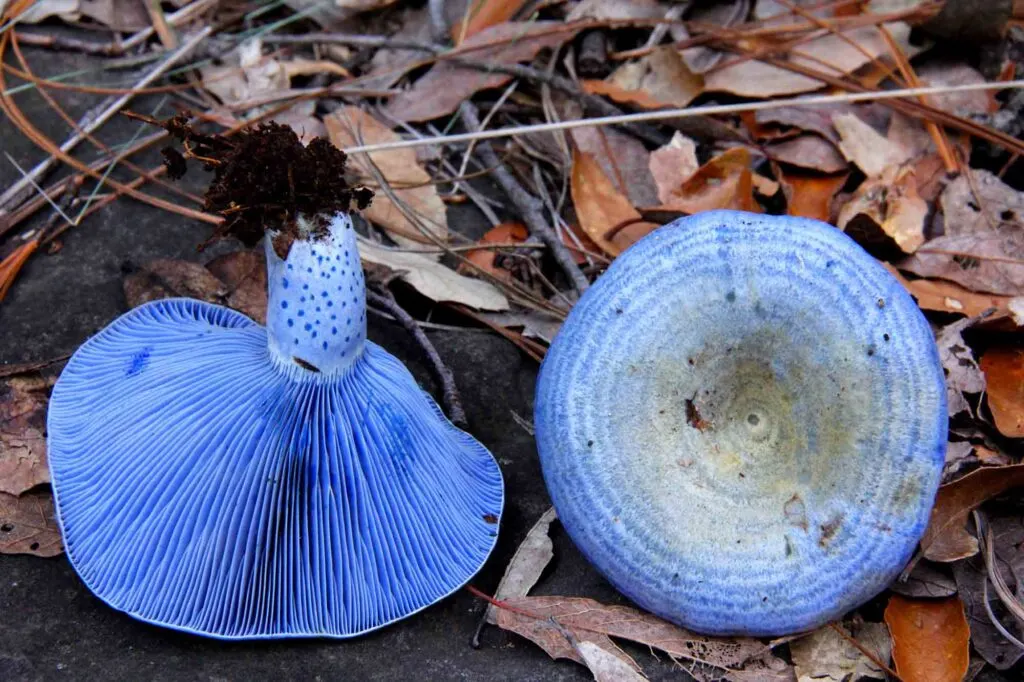Wondering what are the blue vegetables out there? We put together an interesting list of vegetables that are blue to help you create a colorful meal!
Although blue is the least appetizing color on the spectrum, it’s fun (and nutritious) to create colorful meals. Besides, we don’t usually eat many blue vegetables.
In fact, most colored fruits are yellow, orange, and red, and these colors are indeed the ones we perceive as succulent and tasty.
In today’s article, we’ll talk about five vegetables that are blue so you can bring the colors of the rainbow to your plate. Ready?
Blue Vegetables
Here are the vegetables that are blue.
1. Adirondack Blue Potato

These blue potato varieties have blue flesh and light purple tint.
Beyond that, these blue foods are soft and succulent, although their color might not look appetizing. They have an earthy, rich, nutty flavor and a firm, creamy and apple-like texture.
Not to mention the dietary fiber and all other nutrients they provide.
Read next: 13 Juicy Blue Fruits You’ll Want to Eat Today
2. Blue Cabbage

The real name of this vegetable is red cabbage, at least in English. In German, it’s called Blaukraut (blue cabbage).
Interestingly, the red cabbage turns blue when cooking because of ph solutions.
Still, if you want to have a colorful meal with all colors of the rainbow, you might want to avoid adding anything acidic to it, like vinegar or sour fruit, which makes the red cabbage retain its reddish color.
3. Nonna Agnes Blue Beans

The Nonna Agnes Blue Bean is a blue bean that can be grown in any region. While the bean pods are green, the beans inside are dark blue. The blue pigment is heat-sensitive, so seeds that ripen in hot climates will have a steel gray coloration.
The best part about these blue vegetables, actually legumes, is that they taste delicious and provide a whole new experience for those who like blue foods.
4. Indigo Milk Cap

Before you ask: Technically, mushrooms are vegetables. Also known as blue milk mushrooms, these blue fungi are edible mushroom species. However, many people consider them second-class edibles.
Nevertheless, these incredibly-looking blue fungi are also something to consider adding to your plate if you want a rainbow meal. They’re mostly sold in rural markets in China, Guatemala, and Mexico.
5. Filius Blue Pepper
Filius Blue pepper is a hybrid of chili and poblano peppers. It is native to the United States and can grow in pods of any color, including blue, purple, red, yellow, orange, and green shades.
On top of its short cooking time, the Filius Blue pepper is recognized for the spicy richness of flavor that it adds to most dishes.
Blue food fact: Natural blue foods are rare and their color comes from blue anthocyanins. They are the components that give off the blue color in foods.
Questions About Blue Vegetables
Here are some common questions and answers about vegetables that are blue.
Are there any blue vegetables?
Absolutely, but only a few. Blue is the rarest color in nature, and as such, you won’t find many blue things out there.
Still, a few vegetables have high anthocyanin content, hybrid or not, which is responsible for their blue color. Anthocyanins are powerful antioxidants and are widely used as natural colorants in various food products.
Are blue vegetables healthy?
You bet! Blue veggies get their atypical color from anthocyanins, which not only give off blue pigmentation but also improve heart health and reduce the risk of obesity as well as other diseases.[1]
Did you enjoy this article about blue vegetables? We hope it can help you create a meal that displays a full palette of color! Oh, don’t forget to share it with a friend who might enjoy it too!
